Hip joint arthrosis is a disease, which is also called coxarthrosis and occurs in a person due to a decrease in the amount of synovial fluid emitted in the joint cavity.The consequence is a violation of cartilage food and the gradual destruction of the articular surfaces.The disease is natural in a chronic course, characterized not by inflammatory, but by degenerative change in cartilage tissue and gradual deformity of bone tissue.
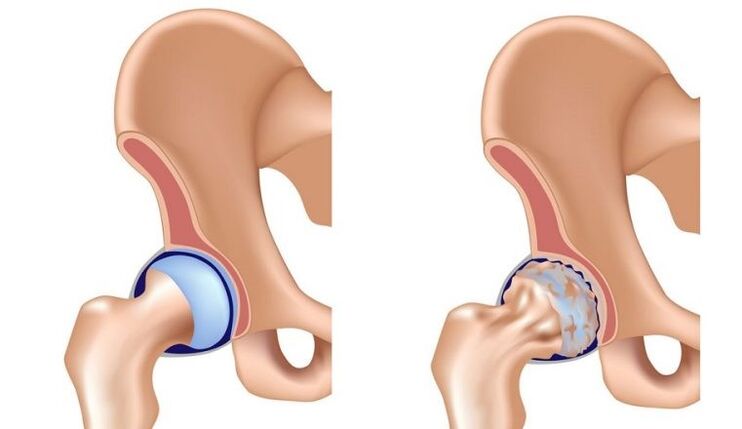
Treatment of coxartrosis is a long and difficult process, the solution of which is the revetologist, choosing the right treatment regimen.With improper treatment, deep deformity with the impoverishment of articular structures is possible, the disease is progressing rapidly and can lead to incompetence and complete loss of motor activity of the affected joint.
Symptoms
Timely detection of the disease is an important ingredient for further successful treatment.But in the initial phase of the disease, the symptoms are scarce and limited to a local pain, with no obvious sign and external changes (lack of edema, color change and structure).Because of this, in most cases, a person simply does not pay close attention to the manifestation of these signs, postponing a visit to the doctor and allowing the disease to progress slowly and accurately.
There are four degrees of arthritis and at each stage there are some natural symptoms in stages 1, 2 3 or 4, but there are a certain series of symptoms when you find out which you should consult a doctor immediately to detect a real disease.Such symptoms include:
- Strong pain in the thigh, groin.The pain is real and sits after a short break.
- Breakfast stiffness of the joints.A distinctive feature of articular diseases, manifested mainly in the morning, after a long break.It is characterized by limiting the mobility of the limbs, stiffness, unpleasant sensations.It is usually necessary about an hour after wakeing up to eradicate symptoms.
- A cramp in the joints, grasping sounds when you walk.
- Change of walking, the emergence of madness.
- The appearance of the change in the length of the limbs.This symptom is found in the later stages of the disease, shortening or extension of the affected limbs is associated with a change in the pelvic structure, its deformity.
The above symptoms are common and are found in many other diseases, which is why it is necessary to consult a good specialist, with additional research methods for accurate differential diagnosis with other similar diseases and making an accurate diagnosis.
Reason
As they grow old, the human body gets tired and has a gradual slowdown in the work of all systems and organs, metabolism slows down.This applies to the bone condition, articular bags and cartilage, which, under the influence of constant loads, dilute and deform over time.The amount of synovial fluid that fills the joint cavity is lost, which causes a decrease in natural depreciation and increased load, followed by the destruction of the joint cartilage.
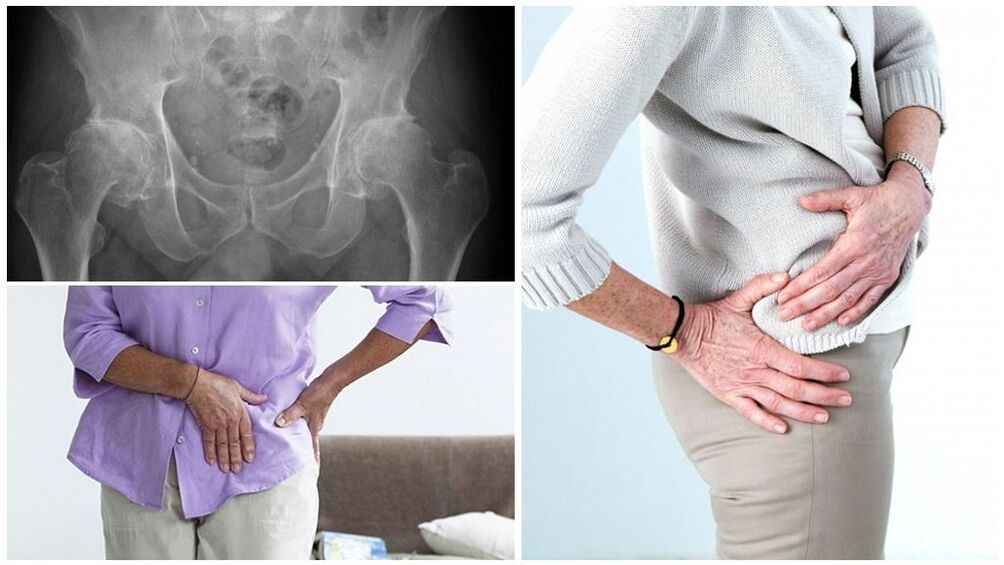
In addition to physiology, associated with changes related to natural age in the body, other reasons for the appearance of hip joint arthrosis include:
- Heavy physical work.
- Inheritance (belongs to the common hip dysplasia).
- Excess weight.Excessive body weight increases the load on the skeletal muscle system.
- Disordishes hormonal disorders.
- Inflammatory diseases (infectious arthritis, rheumatoid arthritis).
- Post -traumatic hip joint arthritis appears 20-40% after damage.
Types and the degree of illness
Based on the results of the clinical figure and based on radiological indicators, 4 degrees of disease are distinguished.
First degree
If the disease is detected at this stage, treatment is the most effective, the affected joint can be stored by providing the right treatment regimen without the need for surgery.But the recognition of the disease at this stage is not so simple because the symptoms that manifest themselves are irrelevant and are characterized by such symptoms:
- Stiffness in the morning.
- Pain in the groin.
- Little pain, pain that occurs during physical exercise in the area of hip joints.
- In radiographs, in the presence of 1 degree of disease, there is a slight narrowing of the joint gap, the single focuses of hihal cartilage sealing, bone growths in the reversible area are possible.
The second degree
The second rate of the disease is manifested by the most pronounced symptoms.This stage is characterized by:
- The appearance of attraction, pain pain in the joints, not only after physical exercise, but also when performing small motor activity.The pain intensifies in the evening and at night.
- When performing motor activity, a change in walking arises.There is a "duck walk", a person leading after a long walk, trying to rely on a healthy leg, thus protecting those affected by the sore knot.
- There is a violation in the movement of the affected hip hip, the difficulty of leaving the affected limbs.
- X -Ray marks a significant narrowing of the joint gap as well as bone growth.
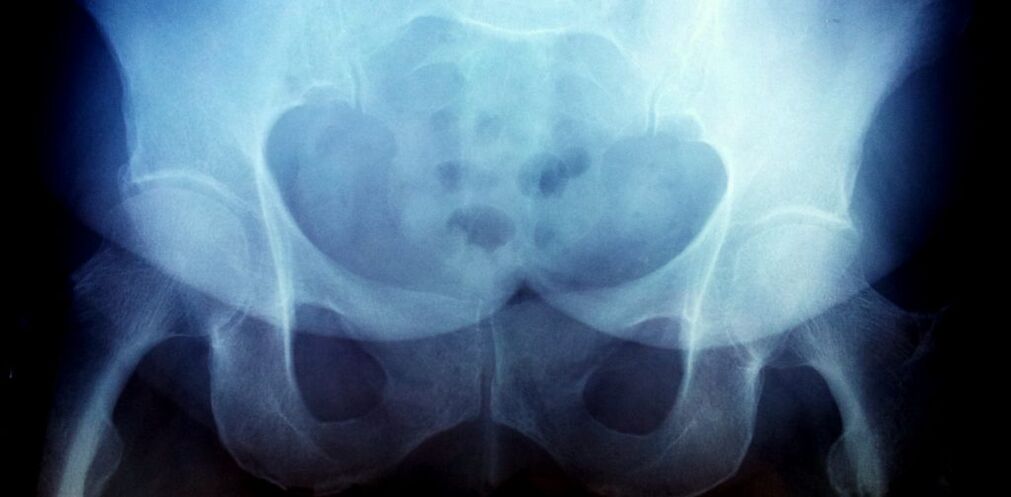
The third degree
Clinical photography has pronounced manifestations in which there are:
- Constant severe pain in loads and at rest.
- Complete loss of motor activity of the affected union.
- The appearance of the change in the length of the limbs.The foot with the affected joint becomes shorter than a healthy limb.
- The X -Ray marks the complete destruction of the hyaline cartilage, the growth of large osteophytes, the destruction of the femur.
Fourth degree
4 -degree pelvic arthritis is characterized by complete atrophy of the muscles surrounding the hip joint of the affected limbs.In 4 stages, there is also a complete loss of physical function.The patient is unable to open the injured leg and cannot do without crutches.In X -Ray, there is osteochosclerosis of the bone, large increased bone growth and complete lack of a joint gap.
Treating this phase is only possible by an operational way.
Troubleshooting
To make an accurate diagnosis and perform timely treatment, a number of certain studies are needed.The diagnosis is performed in several stages.
- General inspection, collection of anamnesis of the disease.The doctor will clarify the information about the presence of injuries, related illnesses and an existing lifestyle.A correctly performed examination helps to make a diagnosis correctly, determine the degree of the disease and eliminate a number of diseases that have similar symptoms, such as arthritis, sacroiles.
- In addition to the examination, the attending physician describes the necessary laboratory examinations.
- Examination X -Ray is a mandatory diagnostic point.A study of the hip joint of both legs has been performed, even if the patient's complaints are applied only for one limb.
- Calculated tomography is considered an additional research method.Using CT, you can study the nature and degree of damage to the femur and articular surfaces.
The treatment of arthrosis
When suspicious symptoms and pain in the hip joint appear, a person mainly arises as to which physician treats such conditions and how self -medication occurs.
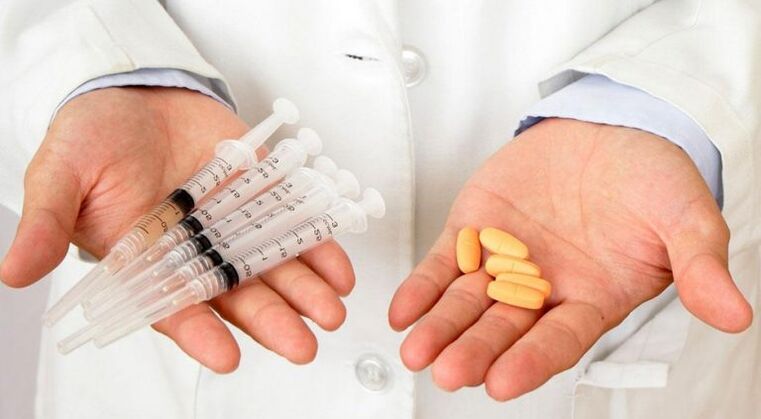
In the first symptoms, it is necessary to seek help in making a diagnosis and treatment with a rheumatologist, while the treatment of more severe forms of arthritis is engaged in an orthopedic.
Treatment depends on the degree of the disease and the nature of the manifestation.The treatment regimen is chosen by a physician for each patient individually.The basic principles of treatment include events such as:
- Drug treatment.
- Diet
- Physiotherapy.
- Massage
- Gymnastics.
- Kinesoteiping (touching the hip joint with special patch).
- They turn to the help of reeds and crutches to remove the load from the affected joint.
Drug therapy
The treatment regimen for hip union lesions without failure includes medication.The sooner you start therapy, the more likely it is to limit the treatment of conservative methods without the need for surgical intervention.
The drug treatment diagram includes a complex of medication:
- To relieve pain, as well as to reduce the inflammatory process, non -steroidal anti -inflammatory drugs are used.
- When the fluid accumulates in the joint cavity, intra -articular injections are used.
- Commonprofrotectors are used for nourishing tissue and improving blood circulation.
- Use the therapeutic ointments locally, applying to the affected joint area.
Physiotherapeutic procedures
The physiotherapeutic method is aimed at improving the blood supply to the affected joints and the improvement of metabolic processes.HIP joint arthrosis treatment includes:
- Magnet-laser therapy.It helps to reduce the pain, improve the mobility of the affected joint.
- Laser treatment.The action of the light laser is aimed at removing the inflammatory process, reducing edema, and cartilage restoration.
- Thermal therapy.It includes mud, paraffin therapy, due to the thermal effect on the affected area, blood circulation improves and metabolic processes are normalized.
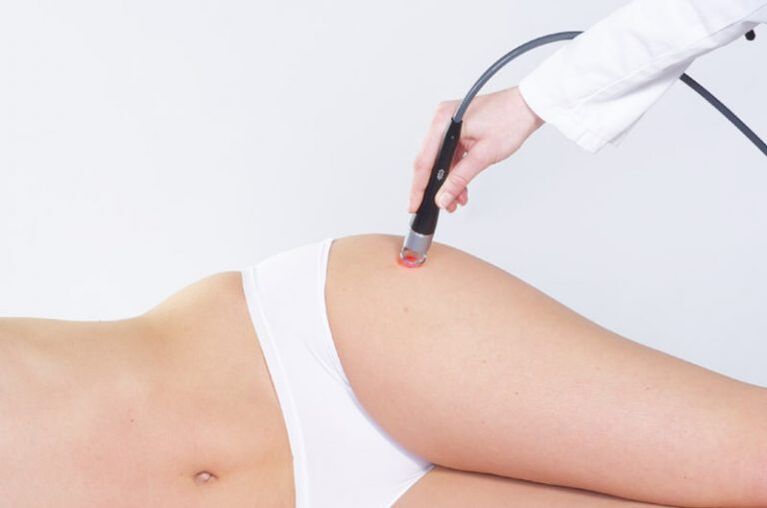
Each type of physiotherapeutic procedures has a positive effect on the affected joints, but at the same time a number of contraindications.It is not allowed to perform physiotherapy during pregnancy, oncology, tuberculosis.
Massage and therapeutic gymnastics
This set of therapeutic masses is an integral part in the complex treatment of coxarthrosis.
Benefits of the therapeutic massage and gymnastics:
- Improving blood circulation.
- Removing muscle spasm.
- Increased motor activity in the affected joint.
- Reducing pain.
- An increase in diastasis in the union of the affected node.
Massage sessions are allowed to be performed at all stages of the disease, but for each stage, maintaining certain conditions.Therapeutic massage is performed only by a specialist specialist, each massage session occurs in several stages:
- Massage back.It is performed with the help of stroke movements with palms, helps increase blood circulation and preparation for the next stage.
- Manual lower back massage.It consists of the same stroke, rubbing and joy of the lumbar region.
- Massage of the sacral area and berry.
- The massage of the thigh.During this phase, the specialist performs pressing movements and rubbing the massage, capturing the area of the affected knot.
In stages 1 and 2 of the disease, it is recommended to hold a self -mass session, devoting the process at least 5 minutes a day.
During the self -massage session, the sequence of actions is also important, it is necessary to alternatively perform the following exercises:
- Massage the back area with your palms, making the adhesive and descending shock along the spine, and then make friction moves with the back of the fists.
- In a standing position, start massaging the buttocks, strokes from the hips in the sacrum and the lumbar region.Once you have finished the blow to start friction.
- The last stage is the hip muscle massage, which is performed in a sitting position.Make an alternate stroke, rubbing and joy.
3 and 4 stages of the disease suggest massage after surgical surgery, a course of therapeutic massage for rapid rehabilitation is performed.
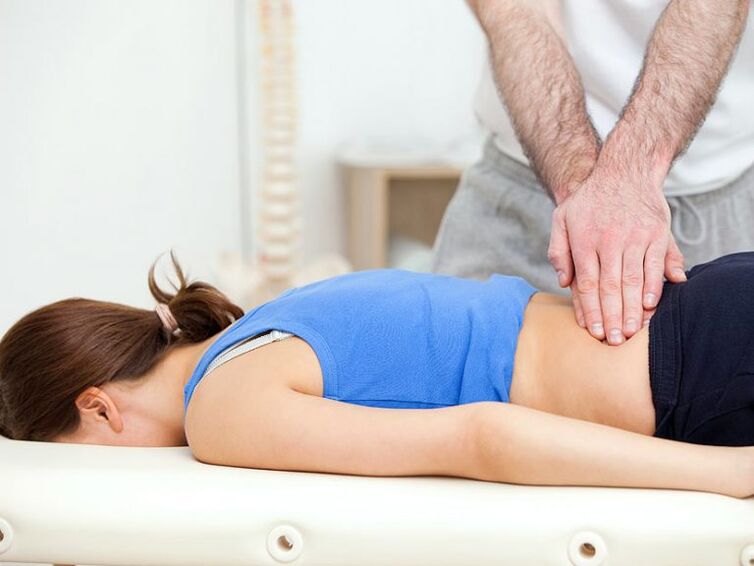
Massage sessions are best alternated with a course of therapeutic gymnastics.Gymnastics for arthrosis is aimed at increasing the blood flow to the hip joint muscles, which contributes to better saturation of nutrients.
The technique of each author has its own characteristics and a number of contraindications to determine in which scheme of gymnastics to adhere to the attending physician will adhere to.
At home, you can perform a number of simple exercises, such as:
- In the stretched position on the back, slowly, alternately raise each foot at an angle of 50 degrees.
- Lying on the back, bending your legs and raising your head from the floor, try to reach your knees.
- In a standing position, remove and raise her right leg back, trying to keep it in this position for a few seconds.
When you are engaged in gymnastics, it is important not to rush and perform tasks as much as possible, keeping an equal, calm spirit.Sharp, incorrect movements can cause injury.It is important to remember that only the doctor who attends can prescribe exercises, based on the condition of a particular patient.Moreover, exercises should be performed in the presence of a specialist to check the correctness of the exercise.
Dietary therapy
The diet has an important role in treatment.In the treatment of arthrosis, it is recommended to use 1600-1800 kcal per day, distributing the daily volume of 5-6 meals.Food should be balanced and rich in vitamins and trace elements.With overweight, a good good diet will help reduce weight, thus reducing the load on the sore joint.
By observing the right diet, you should consider which products should be included in the daily menu, and also what should be completely excluded from your diet.
| Recommended: | It is necessary to limit: |
| Aspor | Brown |
| Vegetables, fruits | Booze |
| Low varieties of meat and fish | Bakery products |
| Dairy and dairy products | Salt |
| Green | |
| Legumes | |
| Buckwheat | |
| nuts |
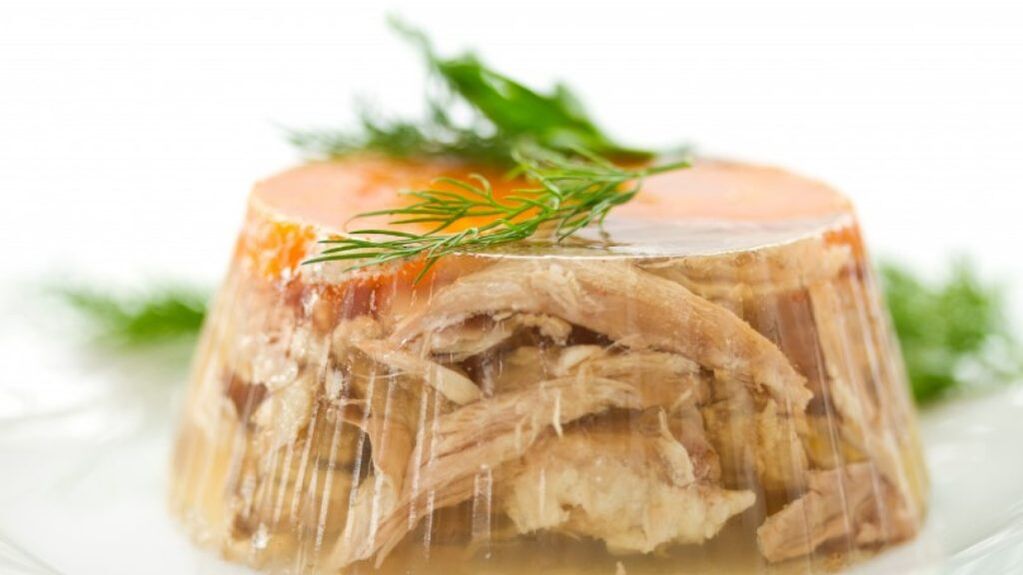
It is necessary to include a sufficient amount of vegetables and fruits in food, to increase the consumption of dairy products, it is worth paying special attention to the products, rich animal proteins (beef, rooster, chicken, low fish varieties).It is recommended to include in Jelly Menu, rich in collagen, contributing to the strengthening and restoration of joint cartilage tissue.
Surgery
The treatment of hip joint arthrosis in the early stages is limited by conservative methods.Often a highly chosen scheme of medication treatment and appointment of auxiliary methods to improve the patient's condition and slow the progression of the disease.Treatment of 3 and 4 degrees of arthritis in a number of cases implies the need for surgical intervention, which consists of surgery to replace the joint.
When do you need an operation?
1 and 2 stages of hip joint arthrosis are treated without surgical intervention, in 3 and 4, sooner or later needs surgery.The surgery is proposed to the patient when changes in the joint reach the extreme phase with complete destruction of the joint cartilage and a large increase in bone tissue.
After surgery, during the rehabilitation period, massage and exercise therapy are described for the rapid restoration of motor activity.
Traditional medicine
What is the arthrosis of the hip union and how to treat it in detail by the rheumatologist.After consulting the attending physician and appointment of the treatment regimen, it is recommended, as auxiliary treatment methods, to consider popular medicines.Treating arthrosis with popular recipes is a good additional method and helps reduce pain, relieve edema, increase joint mobility.
In the treatment of folk remedies, 2 methods are used:
- For getting inside (decoction, tinctures of healing plants).
- For local use (ointments, compresses, wrappers).
To eliminate the main symptoms of the disease, a solvent based on a saber is used:
- The marsh saber should be mixed with medical alcohol in a ratio of 1:10 and removed for several weeks in a dark place.
- Then simmer, strain and use to take 1 tablespoon.l.3 times a day.
- At night, you can rub the solution directly in the area of the affected joint, to relieve inflammation and reduce the pain.
The cabbage -based compress has proven itself in treatment: some cabbage leaves and a grave leaf should be mixed, cook with your hands until the liquid is formed and joined with lesion for 30 minutes.This method helps reduce inflammation and pain.
In the treatment of folk remedies, medicinal plants are actively used, these include: wort, mint of St. John, Mint, Chamomile, Celandine.To get a healing oil, it is necessary to grind the grass by mixing with a baby jelly or cream and slowly rub the oils in the joint immediately after cooking.

All additional methods of treatment should be considered only as auxiliary methods that are unable to cure such a disease independently, and considered in combination with medication treatment, to increase the action in the therapeutic procedure complex.
PREVENTION
To prevent the disease, it is recommended to carefully monitor your health, pay close attention to strengthening immunity, direct a healthy lifestyle, and carefully monitor the quality of nutrition.
Also an important measure in preventing arthrosis is the prevention of hypothermia and the restriction of physical exercise.People with excess body weight are recommended to observe a diet aimed at lowering weight and preventing load on the muscle system.
For the overall strengthening of immunity, preference is given to the strengthening and balanced physical exercise.
Pregnancy and childbirth
The bilateral arthrosis of the hip joint is the congenital pathology of the hip joint, which occurs due to improper formation of articular tissue during intrauterine development.In most cases, with timely detection of the disease, this pathology successfully cures over time, but leaves the risk of developing hip arthrosis at adulthood.
During pregnancy, in the presence of hip joint arthrosis, the overall load on the affected joint increases, due to an increase in total body weight, this factor significantly exacerbates the course of the disease.In addition to increasing load due to increased body weight, in pregnant women, eating joints deteriorates and metabolism slows down, this is due to an increase in the costs of body body resources to provide everything needed for the fetus.
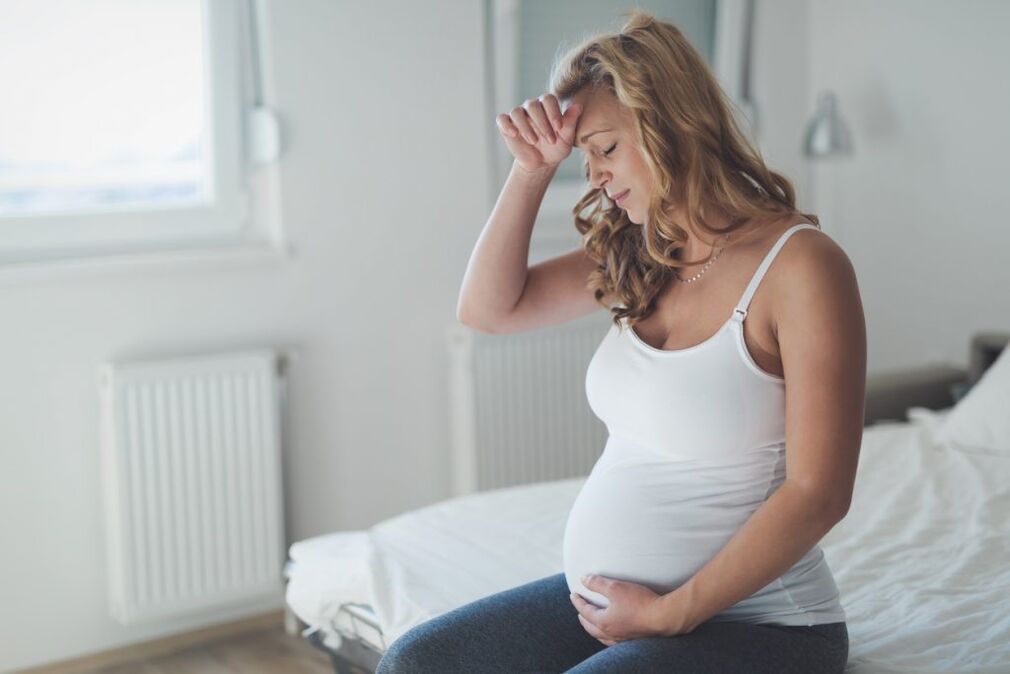
A pregnant woman, in the presence of a disease such as arthrosis of the hip joint, is strongly recommended to observe certain conditions throughout pregnancy, namely:
- Limit engine activity, especially in the third trimester of pregnancy, when the load on the injured joint is maximum.
- Continuous observation by the doctor is needed.
- It is recommended to follow the doctor's recommendations.
- Swimming classes favorably affect the load distribution in the body, increase the muscle mass in the affected joint area and removing the tension.
Predict
With timely diagnosis of hip arthrosis, the prognosis is favorable.If the disease is detected in the early stages, then treatment is provided with a conservative way, the development of the disease slows down and often healing completely, if it does not reach 2 degrees at the time of diagnosis.
In stages 3 and 4 of the disease, when performing a timely surgical surgery, the forecast also remains favorable, with the state of compliance with all the recipes recommended by the physician and the exercise of the constant examination of the attending physician.With well -built operating actions, artificial union has served for decades.
Complications
The main and most unfavorable complication is possible disability.Disability occurs due to full loss of motor activity of the damaged union.With a symmetrical lesion of both nodes, one person loses the ability to move independently, which significantly limits the lifestyle, and also creates a risk of the appearance of other complications (stagnant pneumonia, injured with pressure).
To prevent such serious consequences, it is recommended to start treatment when identifying the first signs, preventing the progression of the disease.



















